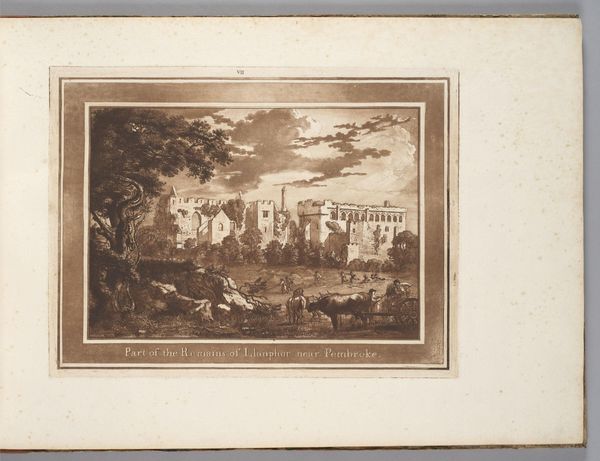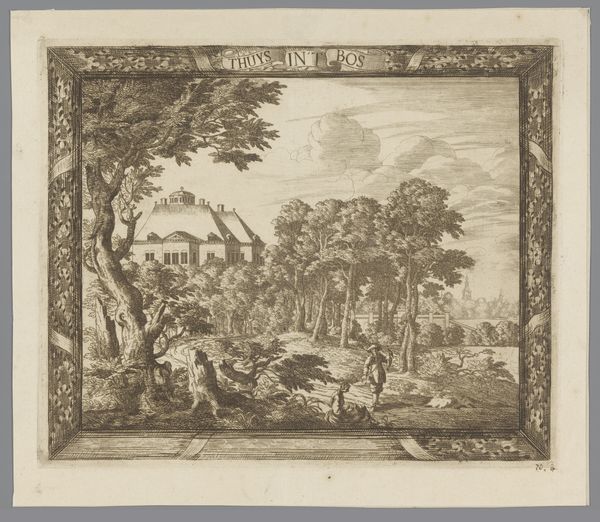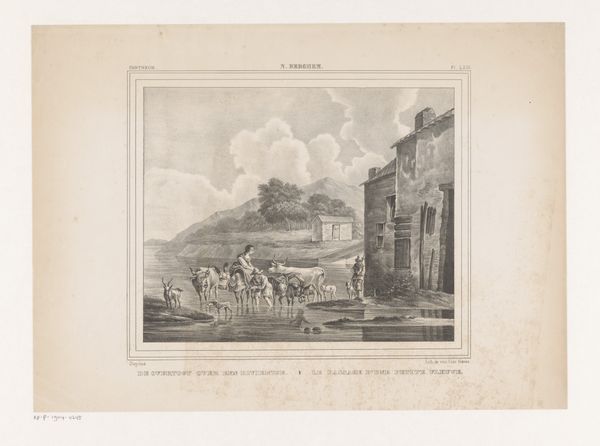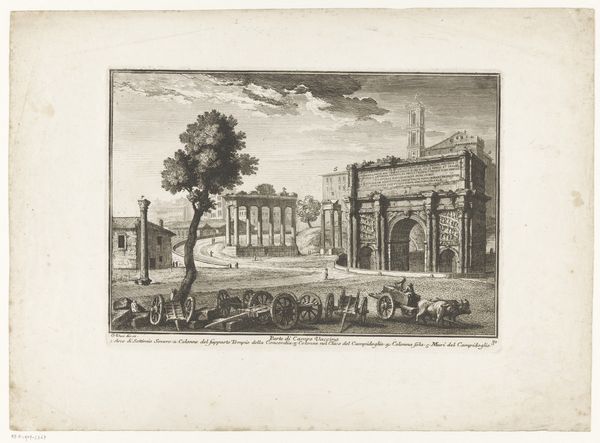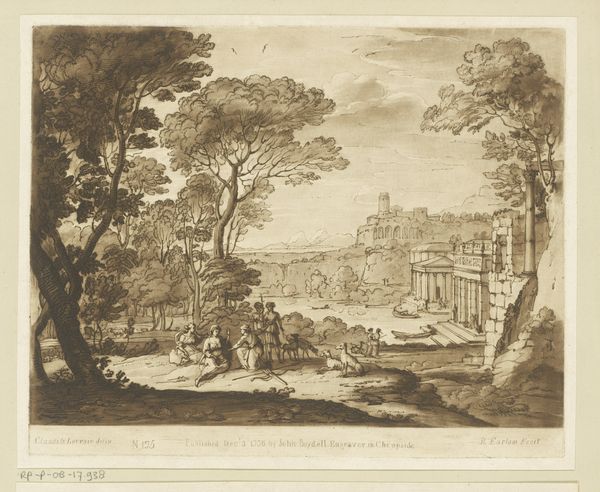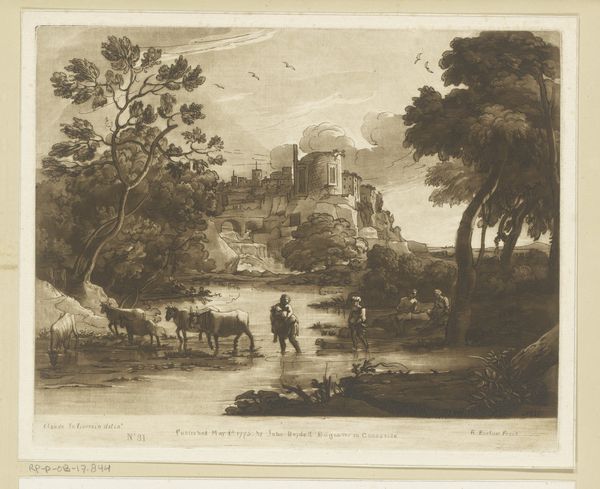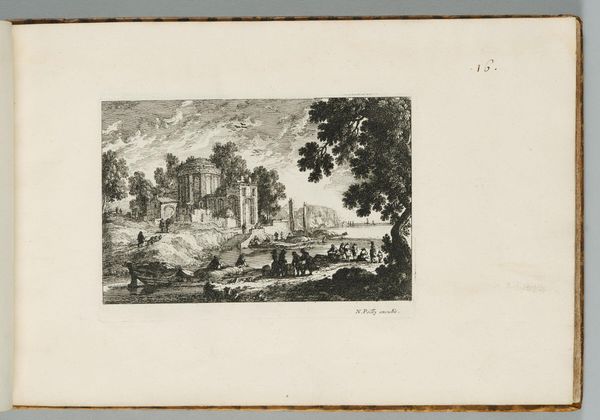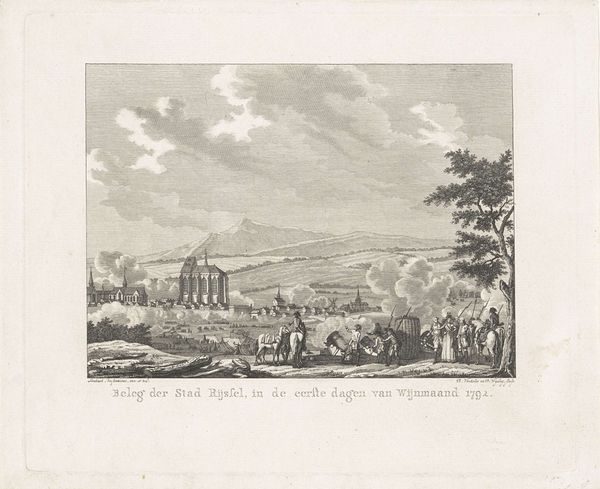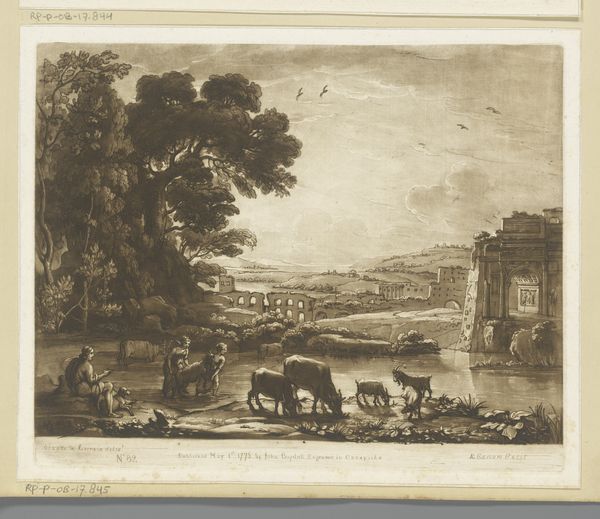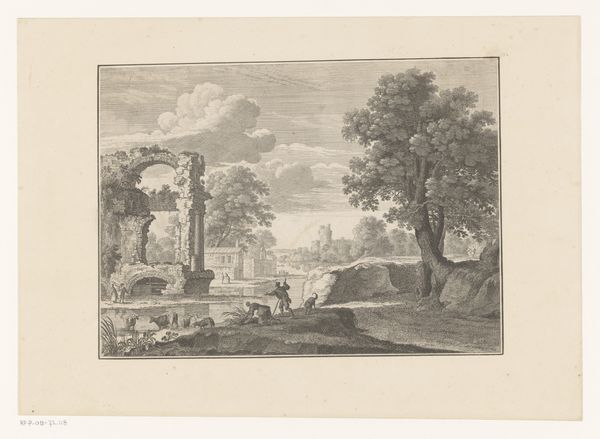
Part of the Remains of Llanphor, near Pembroke, from Twelve Views in Aquatinta from Drawings taken on the Spot in South Wales 1773 - 1775
0:00
0:00
Dimensions: 177 × 252 mm (image); 238 × 314 mm (plate); 355 × 528 mm (sheet)
Copyright: Public Domain
Paul Sandby made this aquatint, "Part of the Remains of Llanphor, near Pembroke," using copper plate and paper. Aquatint is an intaglio printmaking technique, similar to etching, that creates tonal effects by applying powdered resin to a metal plate and then using acid to create a textured surface that holds ink. Sandby’s choice of the aquatint method is significant. Unlike a detailed engraving, aquatint lends itself to atmospheric effects and broad tonal ranges. The granular texture, achieved through the resin, adds depth and a sense of decay to the depiction of the ruined castle. It is an evocative scene of rural life, with farmers and livestock set against the backdrop of the crumbling Llanphor castle. This printmaking technique allowed Sandby to mass-produce images, catering to the growing market for picturesque views among the British middle class, fueled by an interest in landscape and national identity. The labor involved in creating the original drawing and preparing the aquatint plate was multiplied through each impression. The print embodies a fusion of art, craft, and commerce.
Comments
No comments
Be the first to comment and join the conversation on the ultimate creative platform.
